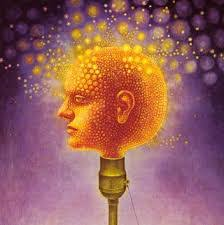 In August 1960, Timothy Leary (a Harvard professor) traveled to Mexico to explore the ceremonial use of psilocybin mushrooms by the indigenous Aztecs.
In August 1960, Timothy Leary (a Harvard professor) traveled to Mexico to explore the ceremonial use of psilocybin mushrooms by the indigenous Aztecs.
It was there that he ate the psychedelic mushrooms for the first time. It was, he wrote, life-changing. He said he learned more about his “brain and its possibilities” in particular and about psychology generally than he had learned “in the preceding fifteen years of studying and doing research in psychology.”
When he got back to Harvard, Leary and his associates, notably Richard Alpert (later known as Ram Dass), began The Harvard Psilocybin Project. The goal was to determine if psychedelic substances could alter human behavior in beneficial ways.
Their first subjects were convicted criminals. Most of them, Leary and Alpert reported, felt they had “mystical” or “spiritual” experiences while taking the drugs. This got the attention of Alan Ginsberg, the poet, who then joined the team. Bolstered by Ginsberg’s support, the project became a cause célèbre of artists and intellectuals.
The project was expanded to theology students and then to graduate students, writers, and philosophers. According to Leary’s autobiography, Flashbacks, LSD was given to 300 subjects. Two hundred and twenty-five of them described their experiences as significant, revelatory, educational, and/or transformative.
In 1964, Leary and Alpert (along with Ralph Metzner) coauthored a book titled The Psychedelic Experience. In it, they wrote:
A psychedelic experience is a journey to new realms of consciousness. The scope and content of the experience is limitless, but its characteristic features are the transcendence of verbal concepts, of space-time dimensions, and of the ego or identity. READ MORE
They concluded that the drug itself does not produce the “transcendental” experience. It somehow opens a channel of the brain that allows it to take place. They speculated that the same “elevated” state of consciousness could be achieved through meditation, yoga, and even sensory deprivation.
“[The drugs act] as a chemical key,” they argued. They open the mind and free the nervous system “of its ordinary patterns and structures.”
To put it in the vernacular of this series of essays, it may be that the effect of the drugs was to relax the ego to such a degree that the “tripping” individual could experience a wide range of sensations with a directness that cannot be achieved when the ego is tight.
Although the experiments showed promise (the recidivism level of the criminal subjects was reported as 20%, compared to the 60% that was considered normal), support for the research did not last long. Eventually, both Leary and Alpert were fired from Harvard. And the hope that psychedelic therapy could unlock the doors of perception all but disappeared.
Today, researchers are discovering all sorts of interesting things about the brain. But I wonder what might have developed from Leary and Alpert’s research had it continued. In particular, I wonder whether we would know more about how to open the doors of perception… and whether, by having more control over their consciousness, people would be able to lead more fully realized lives.
The trouble with the psychedelic experience is that the doors of perception, once opened, are not easily shut. The “tripper” must wait until the drug dissipates in his system. But if other stimuli – such as meditation – can subsume the ego, it is certainly possible to imagine a human mind with much greater power.
What if we could be more in control of the contractions of consciousness? What if we could be entirely focused on some cared-for task in one moment and then be able to open our senses fully to some aesthetic or personal experience in the next?
I once read that JFK could, after an intense discussion of some critical problem with his advisors, step into the White House, drop to his knees, and begin playing with his children as if he had just woken from a relaxing nap. What an amazing capacity, I thought.
What if we could learn to do that?
* In this series of essays, which hopes to become a book, I’m exploring an idea I’ve been thinking about for a long time: that our knowledge of the universe and our experience of living can be understood by the metaphor of pulsation – of contraction and relaxation. And that such an understanding might be helpful in succeeding in life and accepting death.
